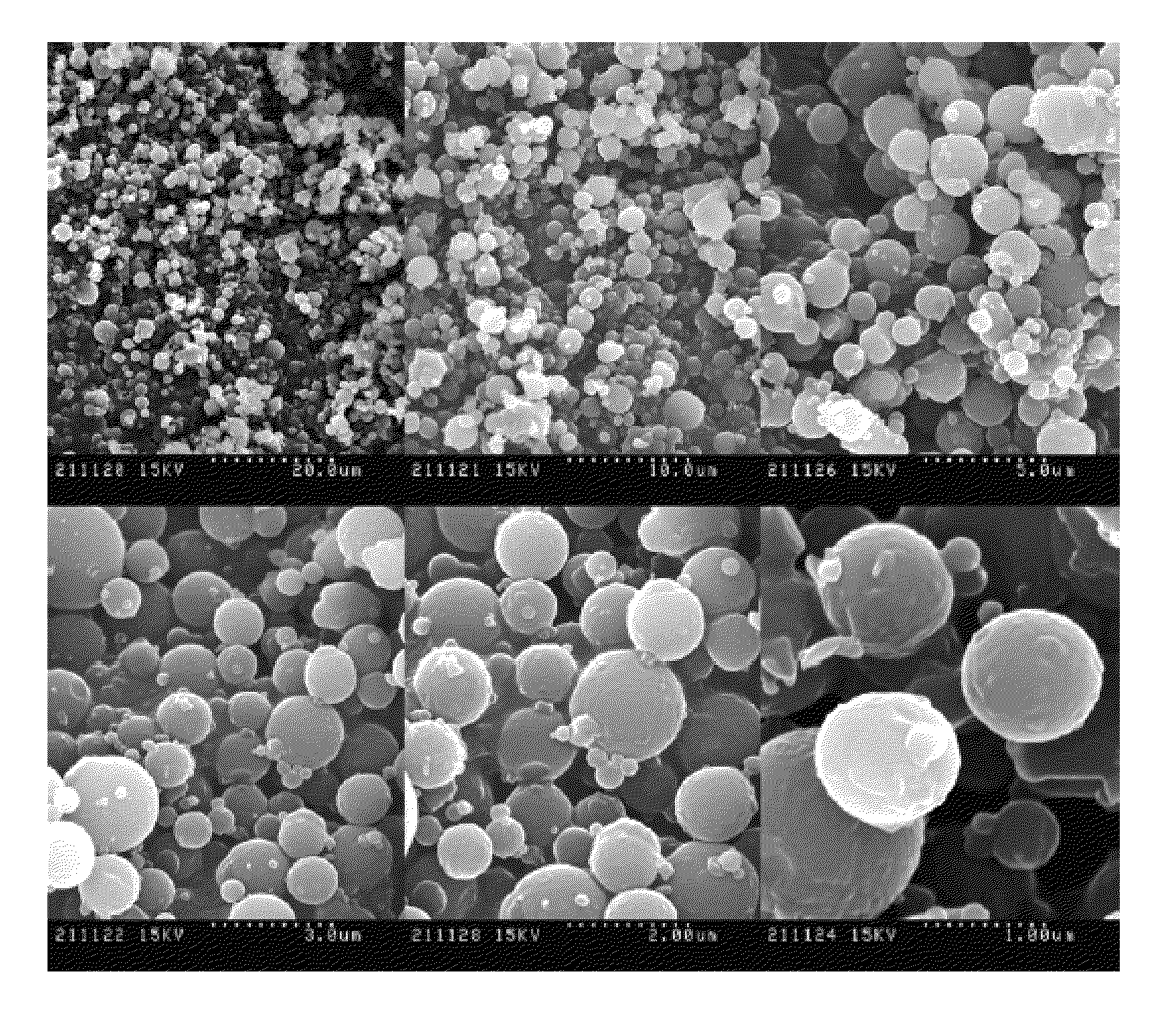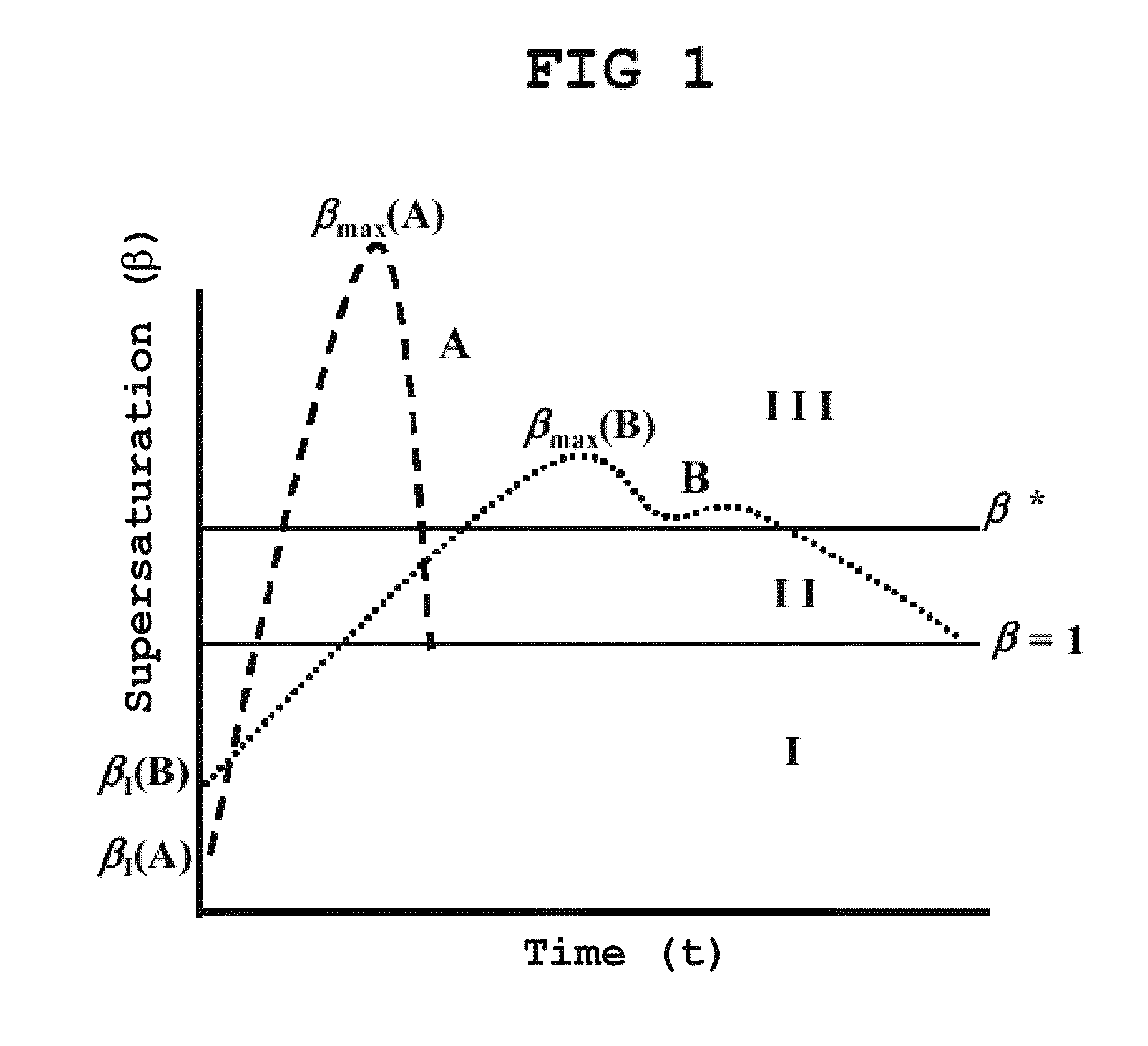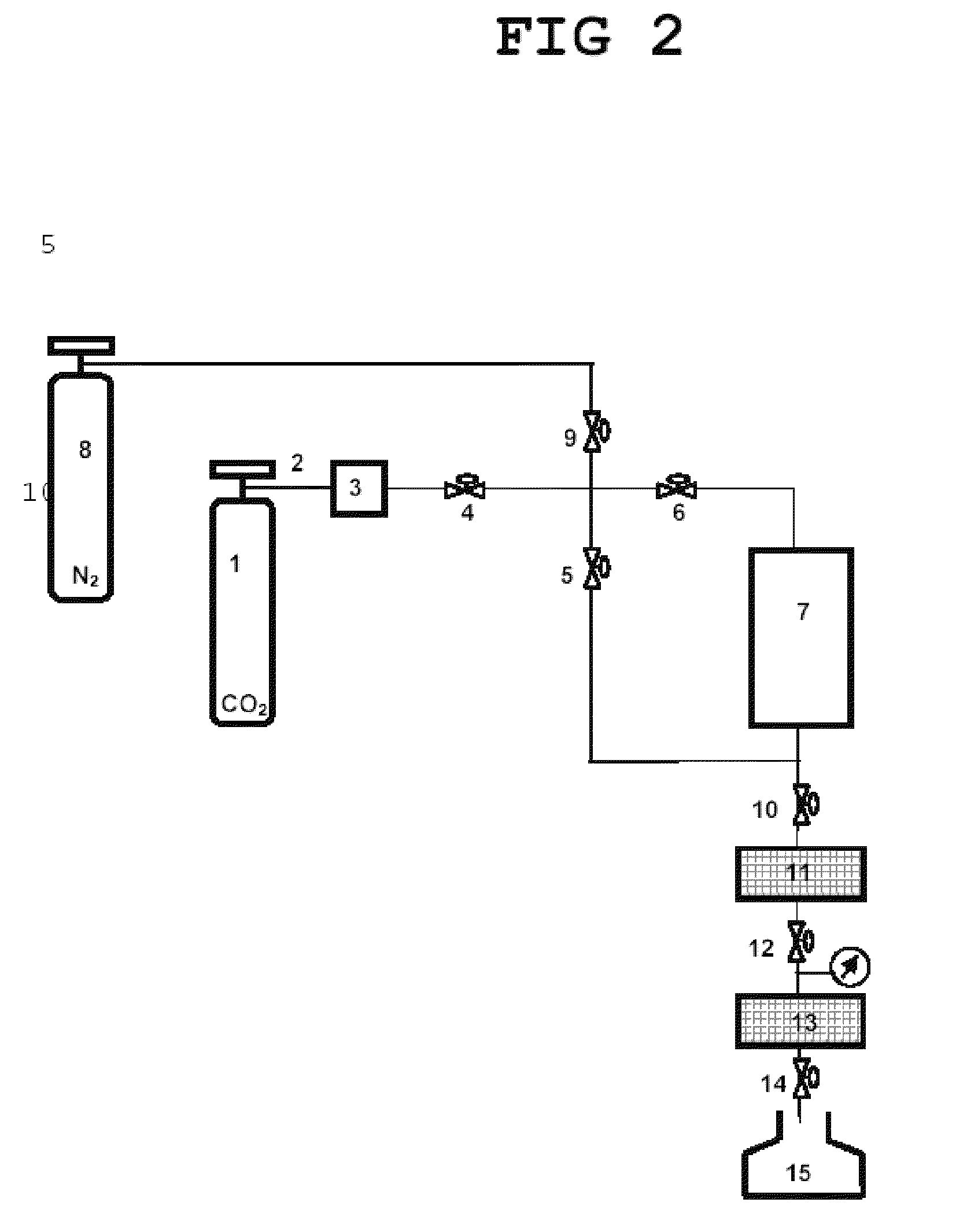Method for obtaining solid micro- or nanoparticles
a technology of micro- or nanoparticles and solid particles, applied in the direction of biocide, separation processes, applications, etc., to achieve the effects of reducing the risk of degradation or structural change, improving stability, and reducing the risk of reactivity
- Summary
- Abstract
- Description
- Claims
- Application Information
AI Technical Summary
Benefits of technology
Problems solved by technology
Method used
Image
Examples
example 1
Obtaining Nanoparticles of Ibuprofen through the Process of the Invention when ΔP<0 (Without Surfactant)
[0088]In a mixing reactor 7 of 300 mL capacity, 170 mL of a solution of the ibuprofen compound in acetone with a relative concentration to saturation of 63% and 90 mL of H2O, obtaining a suspension of the drug in the acetone-water mixture. Over this suspension CO2 is added with a volume of flow of 7 Kg / hr until the pressure P1 of reactor 7 reaches the 100 Bar. The temperature is kept constant throughout the entire process at 35° C. At these conditions, this system is formed by a transparent microemulsion consisting of the system ibuprofen / acetone / water / CO2. The microemulsion is left to stabilize at P1 and 35° C. during 15 minutes (see FIG. 2). The supply of CO2 is closed and the adding of N2 begins through the uppermost part of the reactor through valve 6, to maintain the pressure P1 constant at 100 bar within the reactor during the depressurization process of the microemulsion. T...
example 2
Obtaining Nanoparticles of Ibuprofen through the Process of the Invention when ΔP<0 (in Presence of a Surfactant PEG6000 Dissolved in the Aqueous Phase)
[0090]In a mixing reactor 7 of 300 mL capacity, 170 mL of a solution of the ibuprofen compound in acetone with a relative concentration of 63% and 90 mL of an aqueous solution which contains 10% in weight of the surfactant PEG6000, are introduced, obtaining a suspension of the drug in the acetone-water mixture. Over this suspension CO2 is added with a volume of flow of 7 Kg / hr until the pressure P1 of reactor 7 reaches 100 bar. The temperature is kept constant throughout the entire process at 35° C. At these conditions, this system is formed by a transparent microemulsion consisting of the system ibuprofen / acetone / water / PEG6000 / CO2. The microemulsion is left to stabilize at P1 and 35° C. during 15 minutes (see FIG. 2). The supply of CO2 is closed and the adding of N2 begins through the uppermost part of the reactor 7 through valve 6,...
example 3
Obtaining nanoparticles of ibuprofen through the process of the invention when ΔP>0 (without surfactant)
[0092]In a mixing reactor 7 of 300 mL capacity, 170 mL of a solution of the ibuprofen compound in acetone with a relative concentration of 63% and 90 mL of H2O are introduced, obtaining a suspension of the drug in the acetone-water mixture. Over this suspension CO2 is added with a volume of flow of 7 Kg / hr until the pressure P1 of reactor 7 reaches 100 bar. The temperature is kept constant throughout the entire process at 35° C. At these conditions, this system is formed by a transparent microemulsion consisting of the system ibuprofen / acetone / water / CO2. The microemulsion is left to stabilize at P1 and 35° C. during 15 minutes (see FIG. 2). The supply of CO2 is closed and the adding of N2 begins through the uppermost part of the reactor 7 through valve 6, until a pressure P2=146 Bar within the reactor (P2>P1) is reached. The increase in pressure from P1 to P2 stimulates the water ...
PUM
| Property | Measurement | Unit |
|---|---|---|
| particle size | aaaaa | aaaaa |
| size | aaaaa | aaaaa |
| sizes | aaaaa | aaaaa |
Abstract
Description
Claims
Application Information
 Login to View More
Login to View More - R&D
- Intellectual Property
- Life Sciences
- Materials
- Tech Scout
- Unparalleled Data Quality
- Higher Quality Content
- 60% Fewer Hallucinations
Browse by: Latest US Patents, China's latest patents, Technical Efficacy Thesaurus, Application Domain, Technology Topic, Popular Technical Reports.
© 2025 PatSnap. All rights reserved.Legal|Privacy policy|Modern Slavery Act Transparency Statement|Sitemap|About US| Contact US: help@patsnap.com



